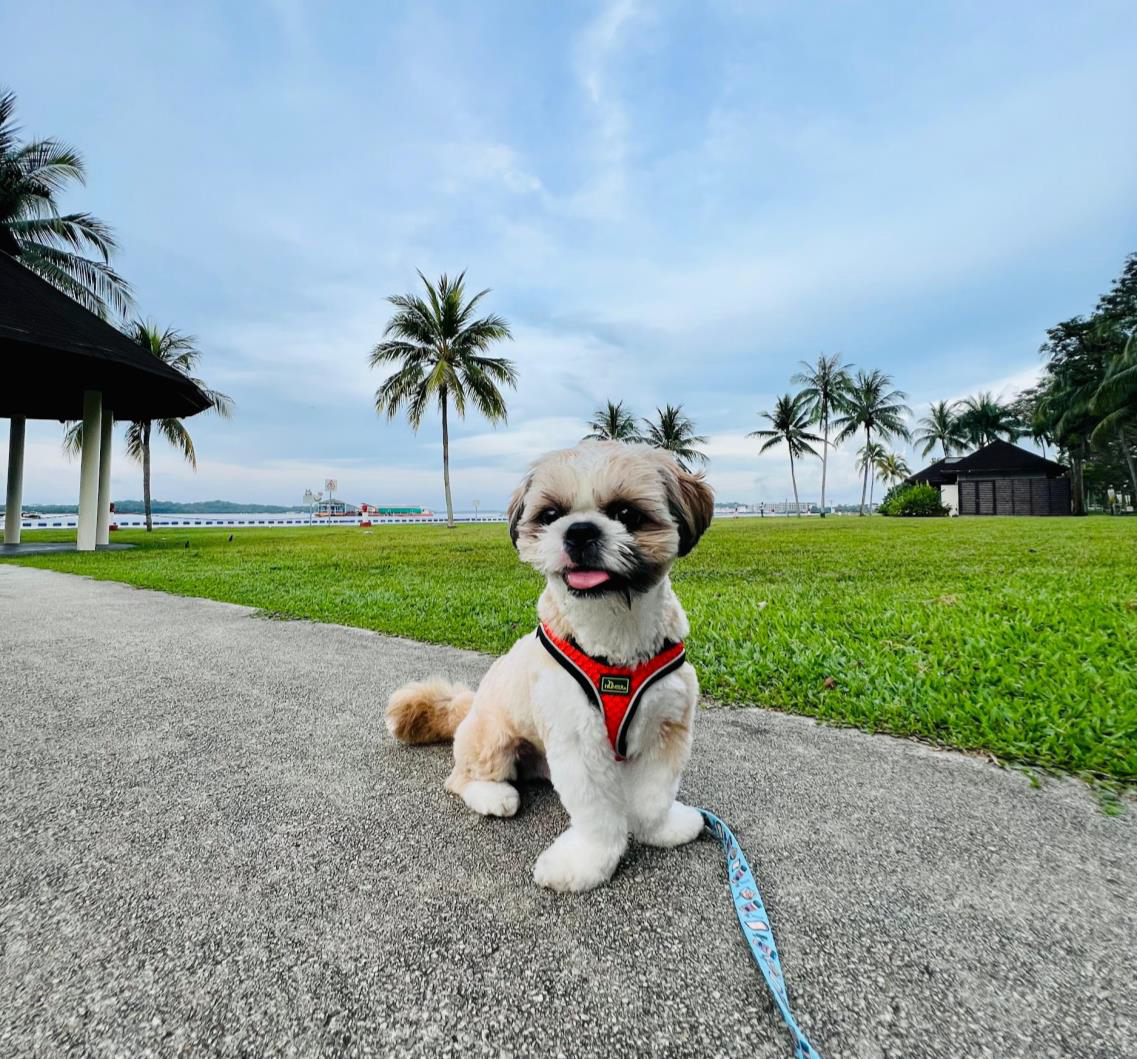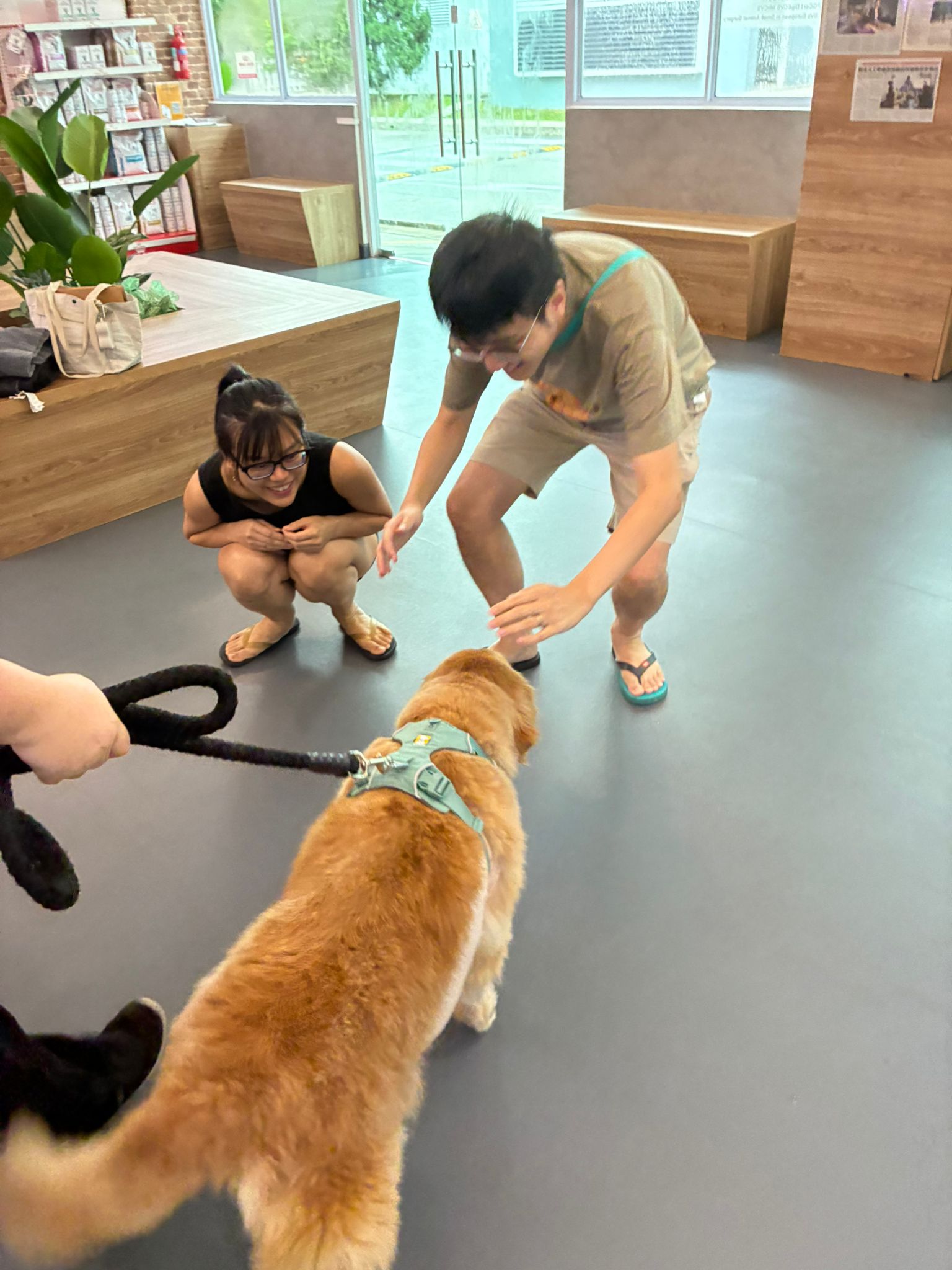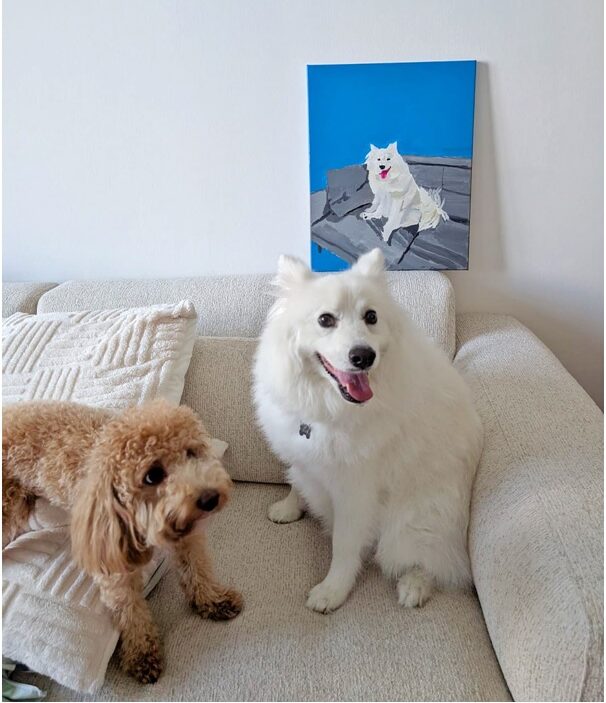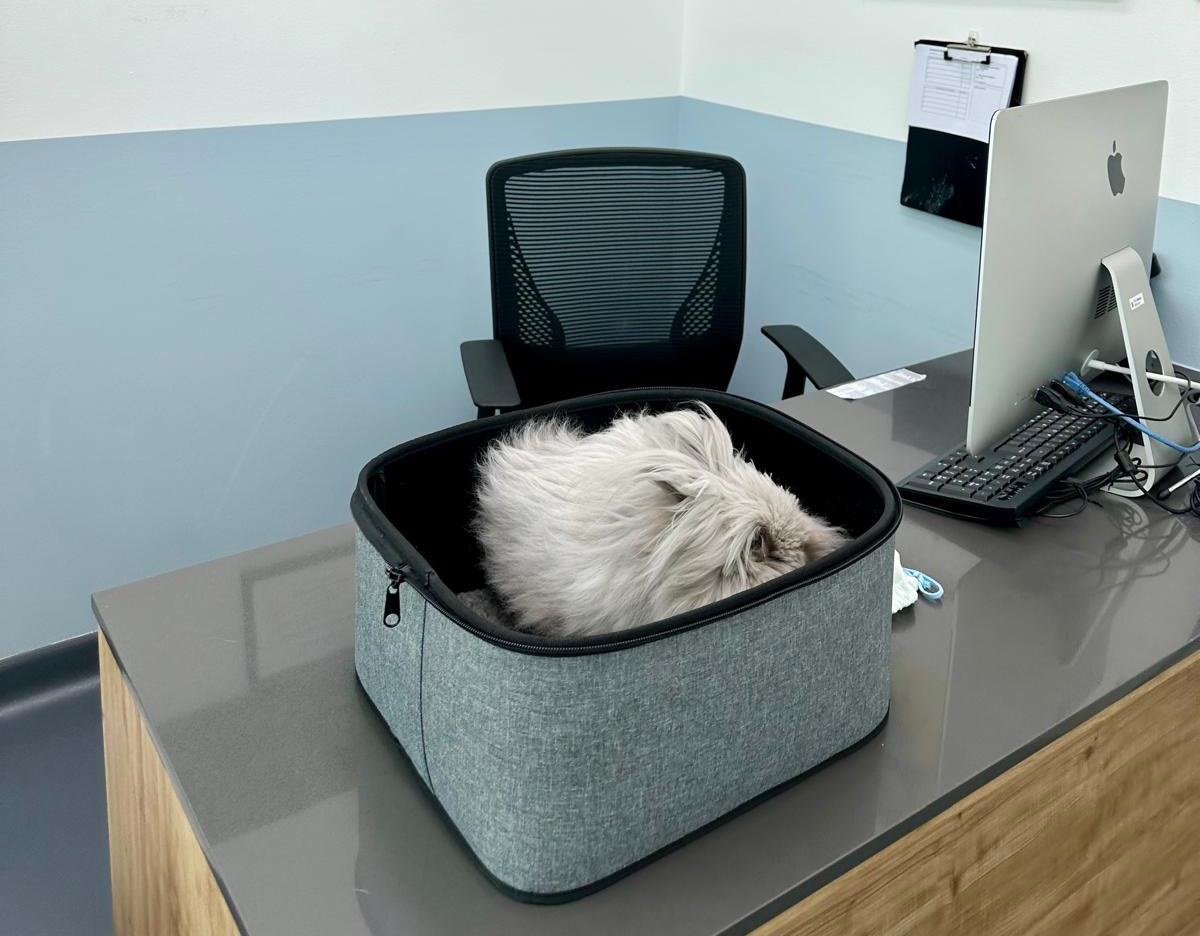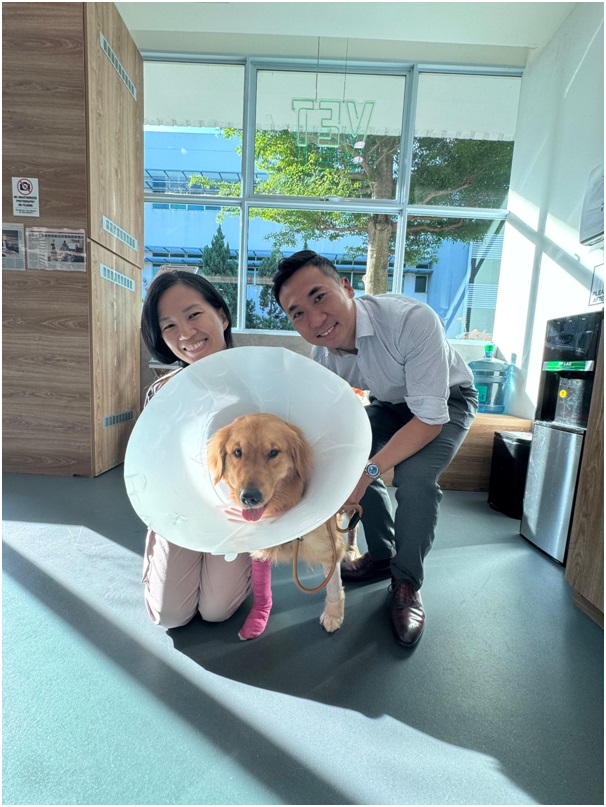Som Tum, a Shih Tzu owned by Sherry Oh, has earned his reputation as the “grumpy old man” of the household. Named after a Thai papaya salad due to Sherry’s deep love for Thai culture, Som Tum is privileged as the first dog in the family.
“His daily routine is nothing short of royal treatment,” laughed Sherry. “He is the last to wake up, expects to be carried from the bed to the kitchen, and it is non-negotiable that his breakfast is prepared before his arrival.”
The Challenge
Som Tum’s orthopaedic issues began early. During his first veterinary visit as a puppy, the veterinarian noticed his forepaws were awkward when standing.
“Initially, we thought he looked quite cute when he stood like this, and so did many of our friends like a cartoon character,” said Sherry.

Som Tum with paws resting at an awkward angle
Unfortunately, angular deformity can have significant consequences causing early onset arthritis, pain and ultimately dysmotility. Much more than just a cosmetic anomaly, complex rotational corrections are often indicated to help maintain quality of life. Given his young age, his vet at Sunshine Vet Care initially recommended monitoring of the condition as Som Tum continued to mature.
At his one-year checkup, Som Tum was referred to Beecroft for evaluation by an orthopaedic specialist.
Dr Patrick Maguire, one of Beecroft’s surgical specialists, attended to Som Tum.
Upon examination at Beecroft, Dr Patrick observed that both of Som Tum’s forelimbs exhibited substantial external rotation, a condition known as “supination”, where the limb turns unnaturally. A CT scan of his forelimbs was conducted to quantify the angular and rotational deformities.
The use of three dimensional imaging diagnostic tools often provides information beyond conventional x-rays. This is important as rotational deformities cannot be adequately seen on two dimensional images alone.

The Intervention
The surgery was performed to derotate the limb, allowing improved placement of the leg and more uniform forces across the joint. To secure the bone, a bone plate of surgical steel was used.
Having recovered well on his left, after a period of reprieve, Som Tum underwent a similar surgery on his right forelimb.

The Recovery
Som Tum’s recovery progressed well following both surgeries. The legs healed and normal alignment was restored.
“Because the surgeries were spaced apart, I had to spend more time caring for Som Tum,” explained Sherry. “Fortunately, my office was near home so that I could check on Som Tum regularly throughout the workday.”
She amusedly recalled how, on one of her checks, she discovered that Moo Ping (her other dog), in an unexpected show of solidarity, developed a habit of helping Som Tum remove his protective cone. While endearing, this “assistance” was potentially unsafe as it gave Som Tum access to his surgical stitches.
“In the end, I had to confine Som Tum to my bedroom, away from his well-intentioned but unhelpful housemate.” She laughed.
Today, Som Tum is running pain-free and can look forward to many more years of active mobility – a significant contrast to the earlier prognosis of a lifetime of arthritic pain.
Sherry appreciated the transparency throughout the process, noting the clear explanations of the various treatment options, potential outcomes, and associated costs. This comprehensive approach empowered her to make informed decisions regarding Som Tum’s care.
Som Tum’s journey from a puppy with a questionable future to a successfully treated patient with expectations for good long term mobility and comfort is a testament to the team’s skill and his owner’s unwavering dedication.

For referral, please reach us here.
